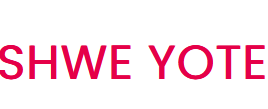In recent times, the job market is increasingly concerned with the well-being of professionals, and together with society, there is growing pressure for the humanization of the corporate world. In this context, the offboarding process appears, which little by little becomes part of the procedures of companies around the world.
What is the off boarding process?
You must be wondering what the expression means, right? To understand it, let’s think about the word “onboarding”. The term in English is used to define the processes of introduction to the new job, leaders, colleagues and main activities. It usually takes place within the first week on a new job and involves a lot of meetings, presentations, conversations and document reading.
In this context, off boarding is the opposite of onboarding. It occurs when an employee is terminated, that is, fired. So why create a new name and expression to talk about the moment of resignation? The reality is that offboarding is not the same thing as a layoff.
The problem of dehumanizing layoffs
It begins to be valued precisely in a scenario of search for humanization and verbalization of corporate problems related to layoffs.
For example, a recent survey, carried out by Consultoria Produtive, showed that 6 out of 10 dismissed professionals believe that leaders do not know how to fire. 417 people were interviewed, and 61.4% of them declared that they had been “taken by surprise” by being dismissed from work, as reported by the magazine Você RH.
Offboarding process: empathy at all stages of the corporate journey
Such numbers make it clear that, A moment as delicate as the dismissal of an employee is not treated with the necessary humanity. This is why the term “offboarding” has come to be used more frequently. It brings with it the need to add security, empathy, care and respect to the dismissal process, making it less exhausting, traumatic and painful.
It begins with the decision to dismiss an employee and continues until there is no longer any link between the company and the professional in question. This goes through the preparation of documents for the process, the communication of the decision and the collection of materials, for example.
Benefits of a humanized shutdown
As a result, incorporating humanity into the termination process brings many benefits, whether for the company, its employees or the professional who is no longer part of the company. Some of these positive points are listed below:
-
- Strengthening the company culture
-
- Protection of business reputation
- Reduction of communication noise and friction
- Less traumatic process for the terminated professional
- Impart a sense of security and professionalism to the teams
What precautions to take when offboarding?
However, such benefits will not fall from the sky. You, as a manager or HR professional, need to establish a series of steps and precautions to have proper offboarding. To help you, we put together a tutorial, check it out now:
1 – Empathy always comes first
The first step is to ensure that empathy is present at all times and decisions during a shutdown. It is necessary to put yourself in the shoes of the professional who is losing their job to understand the best way to deal with this difficult situation. Without empathy, it is not possible to have a humanized offboarding.
2 – Ensure confidentiality and have zero tolerance for leaks
With empathy guiding the processes, be very careful about the issue of confidentiality and possible leaks. You must have heard stories about employees who discovered the imminent dismissal in an unusual way, right? This situation is everything you want to avoid, after all, the professional can feel very bad and the company’s reputation can also be compromised.
Therefore, reinforce confidentiality with everyone who learns about the decision, be careful with conversations in vulnerable places and platforms and ensure that all possible failures are covered. They include public job postings, details on benefit websites and applications, and automatic communications.
3 – Establish the necessary procedures and documents
Leaving all procedures and documents defined and established helps to optimize the entire process. Thus, everyone involved is able to prepare and keep the next steps in mind, which avoids confusion and misunderstandings with the employee involved.
Here, the ideal is to have a checklist with all the formalities, including steps, deadlines, who is responsible and what needs to be resolved, including financial issues.
4 – Do the exit interview
The most critical and important moment of offboarding is the exit interview. In it, you must communicate clearly, honestly, objectively and empathetically that the professional is being fired.
Ideally, it should be face-to-face and have a specialized and trained professional to conduct the conversation, knowing that each interview will be different, after all, different people require different approaches.
This is also valid for different situations, such as professionals who are resigning and professionals who are being fired. Both cases need an organized and humane offboarding, being an excellent opportunity to seek employee feedback and use it to improve the company and its processes from now on.
5 – Align the next step: collect and return materials
A delicate moment is the alignment of the return of materials, such as notebooks, cell phones and other equipment, and the collection of personal items from the workstation.
As much as this often needs to be done quickly, it is important to remember empathy and avoid sudden actions, such as cutting off access to the system immediately or putting pressure to resolve such issues.
6 – Think about the farewell
The last stage of the offboarding process is to think about the farewell. Even with little time, it is essential to ensure that the professional will be able to properly say goodbye to his colleagues. This moment helps with the feeling of “completion of cycles” and is an opportunity to reinforce professional recognition and thank you for your dedication to your time at the company.

